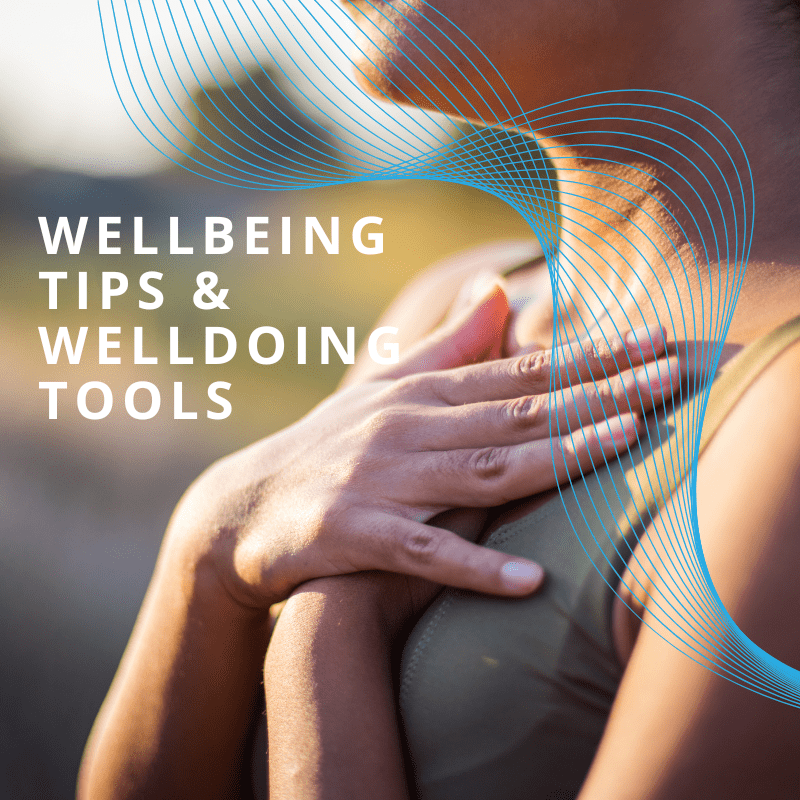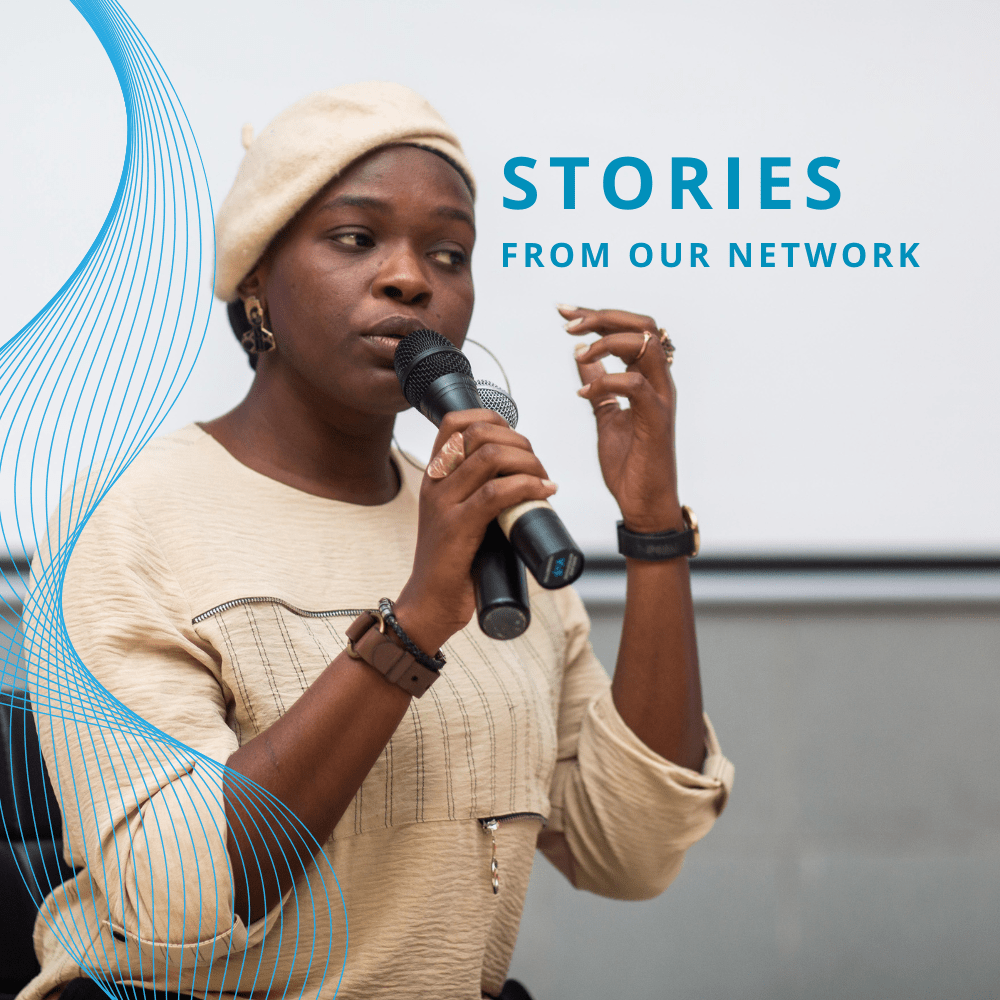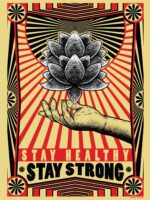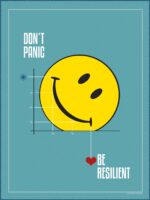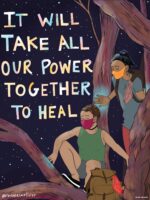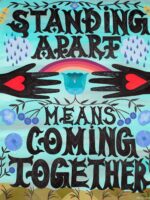
Welldoing Tips Welldoing Tips
Creating Inner Wellbeing
Our Ultimate Guide of Practices to Try Today
Co-created by The Wellbeing Network

What do you do for your inner wellbeing?
Here at The Wellbeing Project, we don’t define “inner wellbeing” – it’s something that means different things to each of us! We do share, however, practices and rituals that help us all along our individual wellbeing journeys.
We asked members of The Wellbeing Network – our global coalition of individuals and organisations championing the wellbeing for social change movement – to share their favourite practices that help them create a sense of inner wellbeing.
Take a deep dive into this growing list to find your next wellbeing practice.
This list is growing – help us add to it! Do you have a wellbeing practice to share? Did you try something on this list and love it?
31 Practices for Creating Inner Wellbeing 31 Practices for Creating Inner Wellbeing
1. Spend a few moments with your breath
By simply tuning into your breath, you can bring yourself into the present moment, ease stress, and create a sense of calmness. It’s a small act with big rewards, boosting your mood, energy, and overall mental clarity. Next time you need a little pick-me-up, just take a deep breath and feel the difference. Get started with our 5-minute guided meditations.
2. Express gratitude
When you pause to acknowledge the things you’re grateful for, whether big or small, you’re shifting your focus to the positive aspects of your life. This simple act can instantly uplift your spirits, cultivate a sense of contentment, and even improve your relationships. So, why not take a moment right now to think of something you’re thankful for? You’ll be amazed at how it brightens your day.
3. Move your body
Whether it’s a quick stretch, a brisk walk, or a dance around the room, getting your body moving can instantly uplift your mood and energy levels. Physical activity releases endorphins, those feel-good hormones that can help alleviate stress and boost your sense of happiness. Plus, moving your body improves circulation, reduces muscle tension, and increases your overall vitality. Need more pros? This podcast episode on a “Playful Approach to Fitness” hosted by Jameela Jamil lists them all.
4. Ha-ha-have a good laugh
Laughter has this magical way of brightening our days and lifting our spirits. When we laugh, it’s like a warm embrace, filling us with joy, connection, and a sense of pure delight. Whether it’s a hearty belly laugh with friends or a giggle shared with loved ones, laughter reminds us to savour the simple pleasures of life and find beauty in every moment.
5. Explore your creativity
Itching to use your hands? Have you always wanted to learn a new artistic skill? Find a space to practice your creativity, such as an art class or a DIY project at home. Not only does exercising your creativity feel fulfilling and spark joy, but using your hands is a proven way to increase feelings of satisfaction.
6. Journaling
Journaling can significantly enhance wellbeing by providing a structured outlet for processing emotions, reducing stress, and gaining clarity on thoughts and experiences. Through journaling, we can track patterns, set goals, and reflect on personal growth, leading to increased self-awareness and resilience. Don’t know where to start? This podcast episode hosted by Dr. Rangan Chatterjee may provide some guidance.
7. Enjoy playtime
Play isn’t just for kids! Adults need to have fun too. Spending time playing – having fun for fun’s sake – can be an antidote to stress, increase feelings of joy, promote imagination and creativity, and build bonds and empathy with others.
8. Learn a new skill
Have you always wanted to know how to cook? Speak a language? Build something? Learning new skills is a great way to introduce novelty into your life, build self-confidence, and meet new people. Watch how-to videos on platforms like YouTube, Udemy, and LinkedIn or ask someone in your community to teach you something new.
9. Spend some time in the sun
Humans are just like plants: we need sunlight to grow and thrive too! Making sure you get a daily dose of Vitamin D (or bright light if the weather is darker) can be one way to boost serotonin levels, strengthen your immune system, and support your wellbeing.
10. Enjoy Ma (間)
Ma is a Japanese philosophical concept of the space between a beginning and an end. In enjoying Ma, we take time to pause, be mindful, and reflect on what has begun and what has ended. The result is an intentional, slow moment that can help quiet the mind.
11. Say “hello”
Research in the U.S. showed that adults who said “hello” to their neighbours self-reported higher rates of wellbeing than those who didn’t. Who in your community can you start saying “hello” to?
12. Stop to smell the roses
By slowing down, being mindful, and keeping an eye on the little things in life, we can invite a certain quietude, peace, and happiness into our hearts. Taking time to notice and be delighted by shōkakkō – a Japanese term for little joys in life – can be a beautiful practice for mindfulness, gratitude, and happiness.
13. Try meditation
Meditating is a practice of mental calm and focus. There are many ways you can meditate. You can start a practice entirely on your own, or you can even download guided meditations from our Meditation Hub or any of your favourite apps.
14. Visit an art museum
While creating art can be incredibly therapeutic, so can simply observing and contemplating it. Alain de Botton and John Armstrong’s book, “Art as Therapy”, explores how viewing art from a new point of view can help us with our wellbeing. The book offers several techniques for using art as therapy, but you can also venture out on your own to see how spending time in museums and galleries makes you feel. Here are some tips from the Guggenheim Museum in Bilbao, Spain.
15. Dance in a group
Dancing with others is an integral part of many cultures. Whether by partaking in a traditional dance or just spontaneously busting a move, dancing is a great way to move the body and connect with others. Look for dance classes in your community, collective dance experiences like flash mobs, attend a concert, or participate in dancing rituals in your community.
16. Drink some extra water
We need to stay hydrated to stay focused and energized during the day. Have trouble drinking enough water throughout the day? Try setting a timer or setting out your cups of water in the morning to remind yourself to drink up.
17. Stretch it out
When you take the time to stretch, you’re not only releasing tension and tightness in your muscles but also increasing blood flow and flexibility. Plus, stretching can help improve your posture and prevent injuries, allowing you to move through your day with greater ease and comfort.
18. Speak to a therapist
Talk therapy offers a compassionate and supportive space to openly explore our thoughts and feelings, leading to improved self-awareness, healthier coping strategies, and increased resilience. Research consistently shows the effectiveness of therapy in reducing psychological symptoms and enhancing overall wellbeing, highlighting its importance in emotional healing and growth.
19. Spend time with a furry friend
Study after study confirms what humans have felt and known since the dawn of time: animals have this incredible power to heal and uplift us, making our hearts lighter and our spirits brighter. Just being around them can wrap us in feelings of comfort, companionship, and pure, unconditional love, making us feel truly connected and supported. Even if you don’t have an animal at home, you can visit a friend’s pet, watch animals in a park, or volunteer at an animal shelter.
20. Take some time off
Ah, taking some time off! An invitation to step away from the hustle and bustle of everyday life and immerse yourself in moments of discovery. Whether you’re exploring far-off lands, reconnecting with loved ones, or simply indulging in some well-deserved rest, a sabbatical or holiday is a precious gift to yourself. On top of being a chance to refuel your spirit, recharge your energy, and return to life feeling refreshed, inspired, and ready, it’s also believed to extend your life expectancy!
21. Eat well
Eating well is like a love letter to your body and soul. Every bite is an opportunity to show yourself kindness and care, to honour the incredible vessel that carries you through life’s journey. Whether it’s savouring a colourful salad bursting with fresh veggies or indulging in a decadent piece of dark chocolate, eating well is a celebration of the abundance and goodness that surrounds us.
22. Cultivate your friendships
Whether it’s catching up over a cup of coffee, or simply being there for one another in times of need, cultivating friendships enriches our lives in countless ways and even extends our lifespan! It’s about creating a network of love and support that sustains us through life’s ups and downs, reminding us that we are never alone.
23. Let it go
A study conducted by the University of Frankfurt found that singing releases oxytocin, a hormone linked to bonding and social connection, which can elevate mood and reduce feelings of loneliness. Singing offers not only a source of artistic expression but also a powerful tool for enhancing mental, emotional, and physical health. Meaningful songs, like those used in special rituals or just your favourite tunes, can help bring you closer to yourself and others.
24. Saddle up
Spending time with horses, either informally or through Equine-Assisted Therapy (EAT), can be incredibly therapeutic. As sacred animals in some cultural traditions, like the First Nations communities in North America, spending time with horses can invoke the historic, spiritual connection between humans and this majestic animal.
25. Tune in
Music can have a healing, therapeutic, and mood-boosting effect on your mental health and wellbeing. When you listen to music that you enjoy or are familiar with, your brain produces the happy hormone (dopamine) and lowers the stress hormone (cortisol). Listening to your favorite music can not only make you feel more joyful but it also can relieve stress and anxiety. Turn it up!
26. Enjoy a light (or strong) touch
Massage therapy is one way to cope with stress and improve your physical and mental wellbeing. When one gets a massage, their body releases serotonin, which eases feelings of depression and sadness, and lower cortisol, a stress-related hormone. One could consider a massage like “an hour-long hug” where physical touch and contact give space for both physical and mental relaxation and rest.
27. Head to the great outdoors
Exercising outside can improve mood, self-esteem, and physical health. Research has shown that there are psychological benefits of physical activity in natural environments. Being outside within nature can offer a restorative environment for when we feel a sense of mental fatigue. Find rejuvenation in Ecological Belonging.
28. Dancing
Dancing is a form of exercise that engages multiple body systems at the same time – the heart, lungs, muscles, and brain. Your brain also releases endorphins when you exercise which can have a mood-boosting effect. Don’t have time to attend a dance class? Can’t find a group to dance with? Get moving on your own by just turning on your favourite music and busting a move at home.
29. Art therapy
Art therapy is a healing process centred on art-making and psychotherapeutic creativity. It can help reduce distress and build emotional resilience. Whether conducted individually or within a community, art therapy can provide a space for meaning-making, which can contribute to an overall improved sense of wellbeing.
30. Slip into full-body bliss with yoga nidra
Yoga nidra, or yogic sleep, is a powerful meditation technique for relaxing and rejuvenating the body. Each short session, taken lying down in the savasana pose, gently guides you through a deep dive through the different layers of the self. You can emerge feeling rested, restored, and ready to go: some say a 45-minute session can lend the physical effect of having slept for 3 hours!
EXPLORE WELLBEING FURTHER EXPLORE WELLBEING FURTHER
Dive Into Stories and Resources From Around the World
Wellbeing Wisdom From India: An Interview with Dr. Mala Kapadia on Intergenerational Trauma and Ecological Belonging Wellbeing Wisdom From India: An Interview with Dr. Mala Kapadia on Intergenerational Trauma and Ecological Belonging
A CONVERSATION WITH:
Dr. Mala Kapadia
Director, Anaadi Centre for Indigenous Knowledge Systems, Anaadi Foundation
🌍 Tamil Nadu, India
What can traditional Indian Knowledge Systems teach the world about wellbeing?
Dr. Mala Kapadia, director of the Anaadi Centre for Indigenous Knowledge Systems at the Anaadi Foundation, shares knowledge and practices from the Indian sciences of Ayurveda, Yoga, Aesthetics, and Poetry, around Ecological Belonging and intergenerational trauma.
Watch the full video for her teachings, or read the highlights below.
“In India, I realized that the ideal could be that India becomes the voice for humanity — where you see the vibrancy of people practicing Ayurveda, practicing Yoga, living their civilizational, cultural values, which is slowly happening post-pandemic. It is slowly happening.”
WHAT ARE THE SCIENCES OF AYURVEDA AND YOGA AND HOW DO THEY RELATE TO WELLBEING?
Ayurveda, as they describe it, is a manual of life skills. It’s not just a medicinal system. It’s Veda- knowledge of ayu. Ayu is life. Ayurveda actually describes Life, and the beauty of Ayurveda is that it is for everyone. It’s not only for Indian people. It’s not for the people from a certain region, but the Sages talked about humanity at large. They say that our life has purpose and meaningfulness and to achieve that, there are paths, right?
The path begins with dharma, a Sanskrit word coming from the etymology Dharayati Iti Dharma. Meaning, anything that sustains you, holds you together, is dharma. I feel it’s a beautiful way to look at our life. It’s only psychology that has taken more than 200 years to reach positive psychology where Martin Seligman and others are talking about meaningfulness. And here there are sages many, many millennia ago who wrote about how life has to be meaningful for us to be healthy and happy. They describe life as Hita, beneficial to self and others, because they always saw life as a continuum: we and the Cosmos, we and everyone else, are interconnected. And only when we are leading a life which is interconnected and integral, can we be happy. And happiness is, not the pursuit of happiness that we understand today in a modern language, but it’s all about the State of Being. With the wellbeing crises that we see today, I realize that Ayurveda beautifully connects the wellbeing of the planet and wellbeing of an individual.
With the wellbeing crises that we see today, I realize that Ayurveda beautifully connects the wellbeing of the planet and wellbeing of an individual.
WHAT DO AYURVEDA, YOGA AND OTHER INDIAN SCIENCES TELL US ABOUT NEUROSCIENCE, EMOTIONS, AND HEALING?
What Yoga, Ayurveda, and the science of Aesthetics are talking about is being rediscovered and not just rediscovered, it’s being validated scientifically by some modern theorists. Today a lot of scientists talk of neurotransmitters, et cetera, but they look at only the brain. If you revisit our biology or anatomy from a Yogic perspective, our physical body that can be seen and studied or x-rayed is one reality, but we are also energy sheets.
So we are still stuck learning biology and anatomy from a Newtonian or Cartesian perspective dividing body and mind. But what is mind? People are still struggling to understand it. While in Ayurveda and Yoga, the body-mind continuum is very beautifully described. We have seven chakras, the major chakras, and many minor chakras. And I’m glad today chakra, like mantra and dharma, is a word in Western vocabulary as well. These are what Georgetown University neuroscientist Candace Pert talks about nodal points of neurotransmitters. The neurotransmitters on those nodal points of the chakras are either blocked or they are open. So when they are blocked, naturally the energy flow is restricted and therefore the energy or Prana does not reach those organs which are connected with those nodal points. She was one of the, I think, first Western scientists to say that body and mind is a continuum.
HOW CAN THIS KNOWLEDGE HELP US WITH HEALING FROM TRAUMA?
So when I go back to Yoga and Ayurveda as ancient sciences as I said, “If we all are integrated, we all are connected, then my energy and the world’s energy is somewhere merging together, right?” Energy, we all know, cannot be created or destroyed. It needs to be transformed. So when we look at trauma, trauma is an energy block as I see it personally. If it’s a blocked energy, then which chakra is it impacting? Is it impacting your security? Is it impacting your relationships? Is it about your power or victimhood? Is it about your heart experiencing gratitude or is it about your heart experiencing a closed xenophobic existence where you switch on to a survivalistic mode? This is what scientifically people talk about trauma and the response to trauma as fight, flight, or freeze. But that fight, flight, freeze is not just limited to the brain. It travels all over the body. So, if my mind is in every cell of my body, then my trauma response is also coming from every cell in my body. It’s not only a cognitive skill.
This is where Yoga and Ayurveda come into play because they have a lot of practices which can help you dissolve these traumatic emotional imprints without wanting to bring them up to the brain, which is not able to cope.
And they can be dissolved with a lot of Ayurvedic treatments, Ayurvedic lifestyle guidance meditations and Yogic lifestyle. And when I say Yoga, it’s not just exercise or breathing exercises or physical postures. Patanjali’s Yoga Sutras, one of the oldest texts of Yoga talks of Yama and Niyama, which are the behavioural codes at the individual level and collective level. So unless we practice them, doing breathing exercises and doing postures will not give us results.
DO INDIAN SCIENCES TELL US HOW INTERGENERATIONAL TRAUMA AND ECOLOGICAL BELONGING ARE CONNECTED?
In all ancient indigenous cultures, I found one thing common is, apart from being connected with nature, they’re also connected with their ancestors. Our history, our ancestors, are living within us, not just genetically, but psychologically and spiritually. Ancestor healing is a major ritual in most of the indigenous cultures, including India. In India, we have birth charts. The moment you are born, depending on the time of the birth, a birth chart for every child is created. Most of the birth charts have a problem with ancestors. It’s called Pitru Dosha. Pitru are ancestors and Dosha is some problem. Now, obviously, we really don’t know what our ancestors were going through, right? Beyond a certain generation, we don’t even know our ancestors. And we don’t even know what their life was. We don’t even know what trauma they went through. But whatever their trauma, we have inherited it and the trauma of Mother Earth. That’s also an ancestral trauma. There are a lot of rituals connected with the five elements – the element of sky or ether or Akaash; the element of air or Vayu; Fire; Water; and Earth – because many ancient indigenous cultures believe that the entire universe and our body all are made up of these five elements.
WHAT IS AN EXAMPLE OF AN INDIAN PRACTICE ONE CAN DO TO WORK ON INDIVIDUAL AND COLLECTIVE HEALING?
One ritual we have is ending all the prayers with saying, “Shanti hi, Shanti hi, Shanti hi.” Shanti means peace. Why do all prayers end with saying peace three times? Just one time could have been enough. The three “peace” is invoking peace at three levels: one, individual, me and myself; two, collective, which is the community around me, society, Nature around me, my nation; and three, the global level and Universal level.
Today, when there are wars happening, when there is so much destruction happening, when there is so much human suffering, working on peace and giving it priority is very important. I realized that, unfortunately, most of the Western researchers define peace as an absence of war or conflict. Peace is not seen as a positive construct in itself, which is there in India. In Indian literature, in Indian philosophy, peace is a positive construct. Health is a positive construct. Health is not as opposed to disease and peace is not opposed to war or conflict. So, if peace is a construct in itself, how do you arrive at it? How do you actually start experiencing peace from within? And chanting mantras, chanting simple Om, is one way.
Why do all prayers end with saying peace three times? The three “peace” is invoking peace at three levels: one, individual; two, collective ; and three, the global level and universal level.
YOU’RE DESCRIBING HOW MODERN SCIENCES ARE “VALIDATING” TRADITIONAL SCIENCES. DOES THIS MEAN THEY ARE THE SAME?
We talk of ancient or indigenous wisdom at one level and modern at another. And a lot of people have this misconception that ancient is outdated and modern is more scientific, or modern is the complete know-how. Unfortunately – or fortunately – we realize that what is ancient is being rediscovered by many modern theorists. So we as humanity, we just have to take a U-turn and go back to our own cultural roots, civilizational roots. I realize that most of the indigenous cultures, they were connected and rooted in nNature. I’ve been to Hawai’i. I’ve met some of the Kahunas, the wisdom holders. And one of the Kahuna, I still remember, she held my hands and she said, “You are one of us.” I realized that she felt that and I felt that because of the Mother Earth. We could have lived in different lifetimes. We could have lived in different geographical locations, but ultimately, it’s all One.
I’ve been to Hawai’i. I’ve met some of the kahunas, the wisdom holders. And one of the Kahuna, I still remember, she held my hands and she said, “You are one of us.” I realized that she felt that and I felt that because of the Mother Earth.
IN FACING OUR 21ST CENTURY CHALLENGES, WHAT ROLE DO YOU THINK SPIRITUALITY AND THIS ANCIENT WISDOM CAN PLAY IN THE SOLUTIONS?
The industrial revolution has uprooted people from nature. Nature has become a resource to be used and exploited. People became a resource that needs to be used and exploited and we didn’t realize that we ourselves became this resource. This trauma needs to be addressed because today, corporates have to wake up to the spiritual aspect, which is not a philosophical aspect, it is a practical aspect. Most of the United Nations Sustainable Development Goals are far away from being met.
When we are spending so much money on sustainability goals, climate change, et cetera, what we don’t realize is, we just need to bring back that foundation of spirituality, Dharma, in everything we do. And the moment that foundation comes back, everything will fall into place. Right now, we have lost the bigger picture. We are all struggling with pieces of puzzles, trying to fit them here and there. But spirituality is like a bigger picture, and without looking at that bigger picture, we are not able to fit in those pieces of the puzzles.
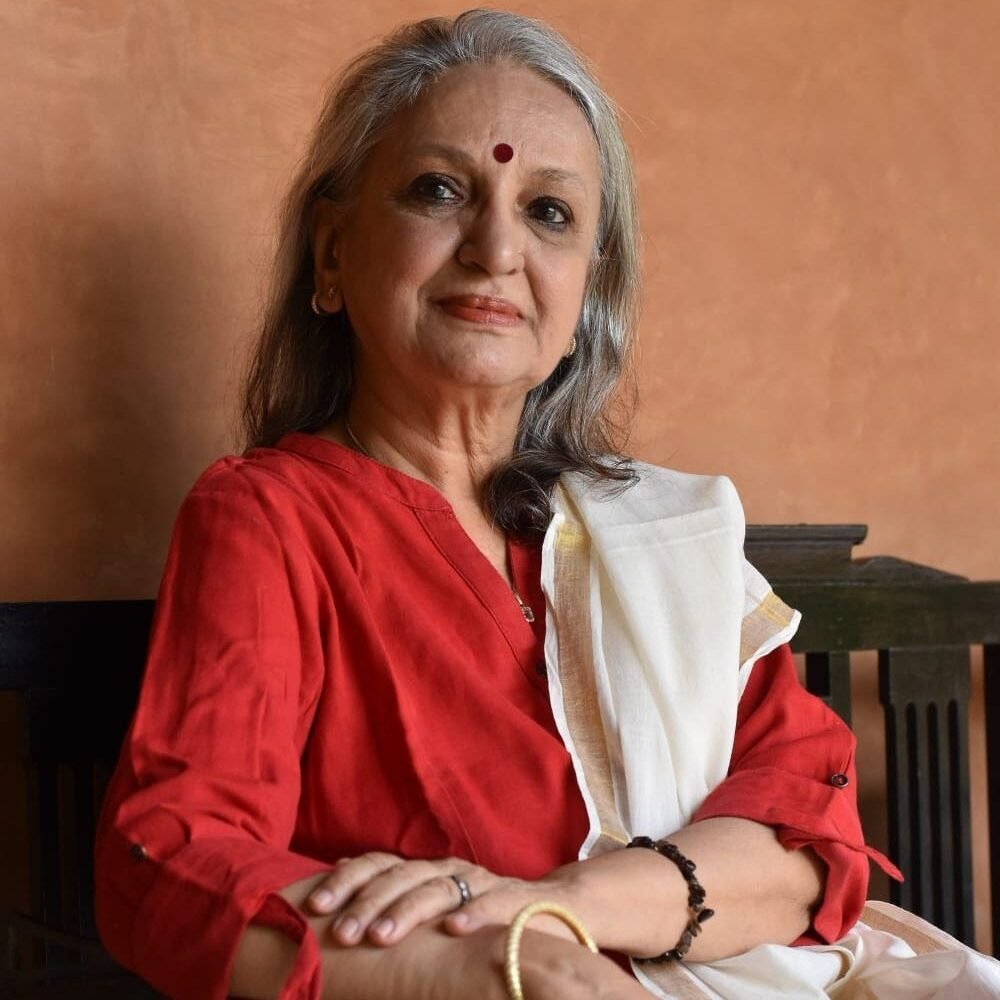
About Mala
Dr. Mala Kapadia is a highly accomplished scholar and practitioner with a distinguished career spanning research, education, journalism, human resources, and consulting. She is a passionate advocate for integrating ancient Indian wisdom with modern approaches to wellbeing, leadership, and organizational development. Dr. Kapadia is currently the Director of Centre for Indigenous Knowledge Systems, at the Anaadi Foundation and the Principal Investigator for a Ministry of Education (India) Indian Knowledge Systems Research Project on Wellbeing and Happiness based on Ayurveda. Mala is also a Guru participating in Grateful to Gurus, an initiative by Indica Academy, in which she inspire young minds in ancient wisdom. She is also a member of the Advisory Council of Centre for Indian Knowledge Systems at Chanakya University, Bengaluru, India.
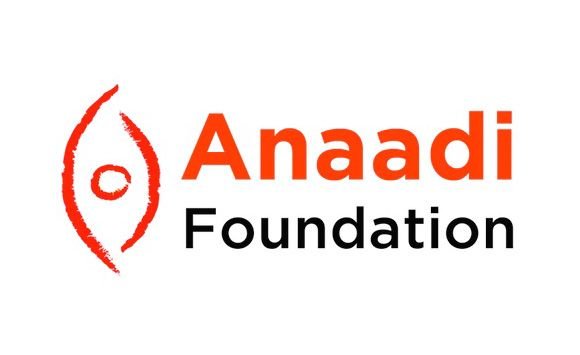
About the Anaadi Foundation
Anaadi Foundation is a spiritual organisation founded in 2015 and located near Palani in Tamil Nadu, India. With key focal areas on Education, Culture, Wellbeing and Sustainability, the Anaadi Foundation focuses on imparting Indian Knowledge Systems through various initiatives including Dharma Gurukulam, IKS-funded projects, publication of books, and training programs. The Anaadi Foundation provides various programs aimed at physical, emotional, and cognitive stability. These include the Mouna Sadhana program, which integrates asana, pranayama, dharana, dhyana, and Bhagavad Gita sessions. The foundation actively engages in sharing and preserving the depth of Indian culture, sciences, and values.
Want to know more about trauma and its impacts?
Watch the first virtual convening in our webinar series hosted by The Wellbeing Project and the Collective Change Lab. You can also visit our new hub for research and stories on intergenerational trauma. Together, we explore how we can move from trauma-informed to healing-centered ways of working for systemic change.
Discover the Wellbeing Movement in IndiaDiscover the Wellbeing Movement in India
Meet and hear stories from the changemakers championing the wellbeing movement in India.
Healing From Trauma: The Leadership Skill You Didn’t Know You Needed Healing From Trauma: The Leadership Skill You Didn’t Know You Needed
A CONVERSATION WITH:
Benoît Legrand
Business leader, psychogenealogist, former CEO and Chairman
🌍 Paris, France
As the conversation around the impacts of trauma in the social change sector continues to grow, changemakers can take an opportunity to reflect on how their wellbeing impacts their leadership skills.
Last November, TheMerode Club brought together seasoned executives from the government, business, civil society, and academic sectors to reflect on wellbeing at the individual, collective, and planetary levels.
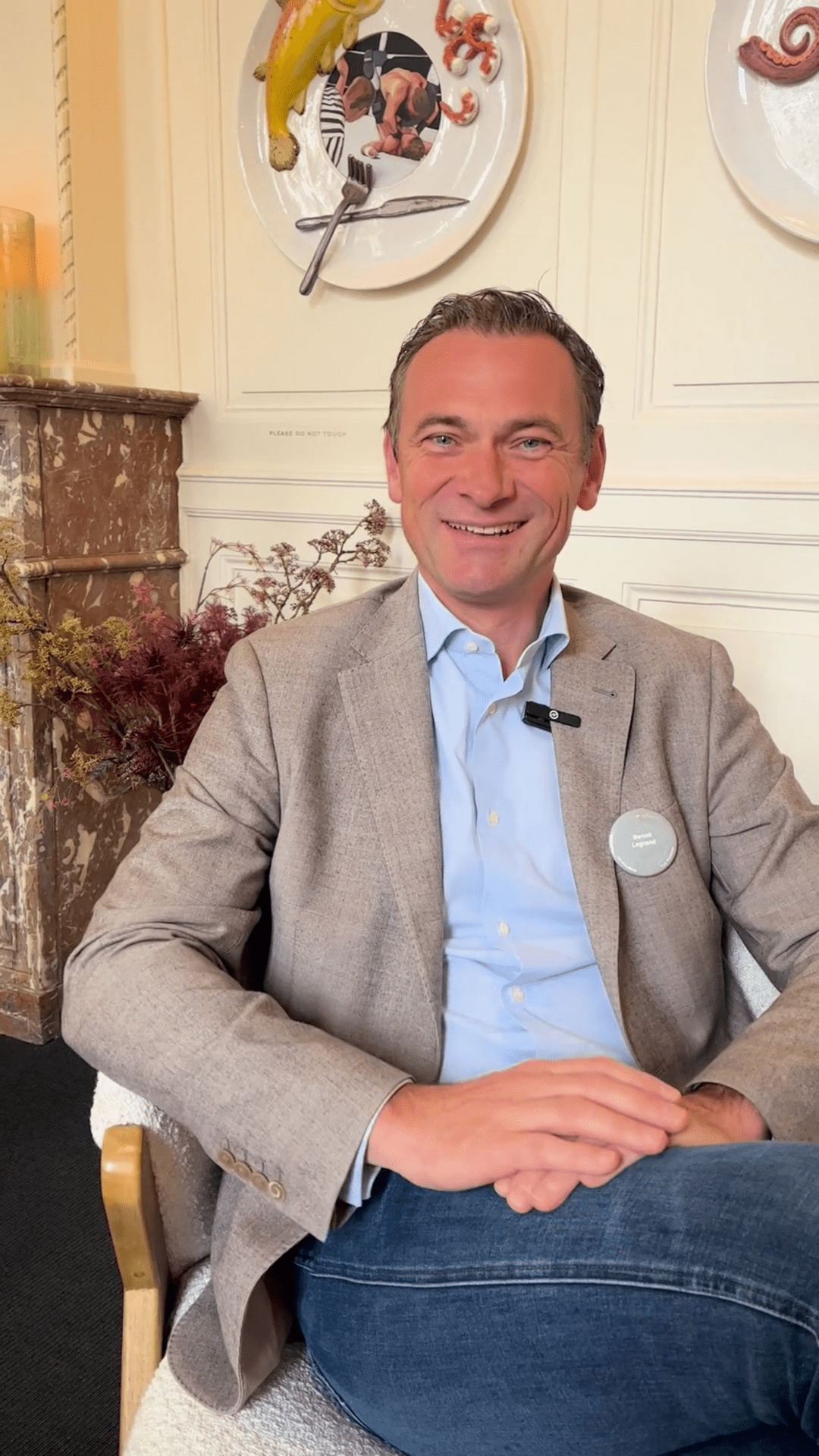
Benoît Legrand, a visionary business leader with over 25 years of experience in various C-level positions in the European financial sector, joined The Wellbeing Summit Brussels to share reflections from his career in business and newfound venture as a psychogenealogist.
Speaking on a panel about the impacts of intergenerational trauma with The Wellbeing Project’s co-lead, Aaron Pereira, and Katherine Milligan, Director of the Collective Change Lab, Benoît encouraged changemakers to connect the individual with the organizational by asking themselves: how do my traumas impact my leadership style?
We sat down with Benoît to dive deeper into this topic. Drawing on his business and personal experiences, hear from Benoît about why acknowledging and addressing one’s traumas is an essential leadership skill, plus encouragement for leaders to start this important journey.
“It should be part of the essentials of leadership. Because, knowing your own darkness is, I think, the best method for dealing with the darkness of other people. You cannot have change, have people change, and change yourself before you accept that something is really wrong. Right?”
Tell us about the impacts of trauma.
Trauma, for me, is something which we all go through, and something absolutely necessary to be aware of to give the best of yourself and find your place in this world. The idea of “trauma” might give or have a sense of drama, which is of course very true when we think about those very macro-level traumas which have affected large populations or very deep traumas that some individuals can go through. Yet, trauma goes also into more subtle dimensions of things which traumatize you. You can be affected by what happened to you consciously, but also by what happened in your family, school, community, country, continent, or race. These impacts are being inherited, which we see now from an analytical and empirical point of view. So in a way, we are all traumatized. But it’s okay. The point is merely for every one of us to just first acknowledge it, dare to look at it and think beyond everything which we know consciously.
I’ll always have in my mind what Carl Jung said, “who looks outside, dreams, and who looks inside, awakes.” I’ve learned that from this process. I thought just looking outside would make me smart and intelligent. But the awakening comes from looking inside of myself, not being scared and not being afraid. By facing reality, we can unlock a lot of situations.
Leaders care about so many people and they don’t want to let anyone down. But they should realize that if they go down themselves, they let everyone down.
When leaders do inner work, including healing from trauma, how does it impact their organization’s wellbeing?
It’s just essential to face your trauma as a leader. You will notice anyone who’s just going out there and showing his vulnerability, just making himself more human. As a leader, if you effectively radiate this positive energy, then it diffuses around the organization. It’s a bit like a pendulum: if at the very top, the positive radiation is there, the radiation at the bottom will be just proportionate. And if the organization is big, or you go to a company or a country, then the impact you can have is just immense. So it’s our own responsibility to think for ourselves: What do I want to be in this world? Do I want to be an agent of positive radiation? Or do I still want to keep all this hatred and and violence and fear and negative energy in myself and overload the world with that right?
Do you think leaders understand the importance of caring for their wellbeing?
Let’s say, okay, we know it’s important to eat. We know it’s important to sleep. We know it’s important to read good things. But do we take, as leaders, the time to step back to sit with someone and just have a conversation? Get a couple of things out, talk and discuss, just to say, “Well, I’m not alone here, right?” and to take care of yourself? It’s fantastic because leaders care about so many people and they don’t want to let anyone down. But they should realize that if they go down themselves, they let everyone down. So having a preventative strike, taking a step back, breathing it, having a discussion and looking at your psychological health is very important. But that can be very hard for leaders, to say, “I need to ask for help.” I personally have been very bad at this.
Can you tell us a bit more about that?
I’ll just testify what I’ve been through. I was having a very intense business life. I was managing teams all over the world and travelling 80% of the time. I was also under heavy stress, with a new CEO that was misaligned with what I was thinking. There was a combination of things, including me having worked like hell for the last 20 years, going all over the place, with pressure from left to right. And at one point, my body – because my brain didn’t want to understand it – sent the signal: stop. My heart gave me a very strong signal that I needed to stop. I stayed in the hospital for four or five days, where I realized that I went over a limit because I was not sufficiently courageous to face my limits and ask for help.
I kept denying reality. I thought, because I’ve been through so many challenges and successes as a leader, I’m going go through it this time also. I’m not going to ask for help or say I’m vulnerable. But the second problem is once you effectively realize you’re not OK and you might not manage to deal with the situation, there’s some kind of taboo. So you just keep fighting on your own. This is what leaders might face. I know that in France, about one out of two leaders or entrepreneurs is close to being in burnout. One out of two, which is just dramatic.
So what should leaders be doing to care for their own wellbeing, which then will have a positive impact on their organizations?
You, as a leader and manager, have been doing nothing else than daring right? You have been taking risks. This is what you do daily. But there are also risks to take about yourself so you can see a couple of things. It’s okay. You will be more powerful by doing it. And really, what do you have to lose? Even if you’re 40, 50, 60, you still have life to live. What do you want to do with it? So look forward and say, “Is it worth taking the time and challenging myself just to try to be at the best place can be on this planet?” If you take that time, once you’re there, nobody can stop you.
Look forward and say, “Is it worth taking the time and challenging myself just to try to be at the best place can be on this planet?” If you take that time, once you’re there, nobody can stop you.
And the systemic approach is so powerful. We live in systemic environments: whatever changes something which influences something which changes, and so on. Once you start talking about something, you see things happening around you. The power of communication, daring to put things on the table and explain things, starts to unlock a lot of things that can bring a lot of peace.
But do this in a secure environment: bring safety and security around you. It can be hard, but if you do it with the right spirit of care, love, and positivity, it will come right back to you.
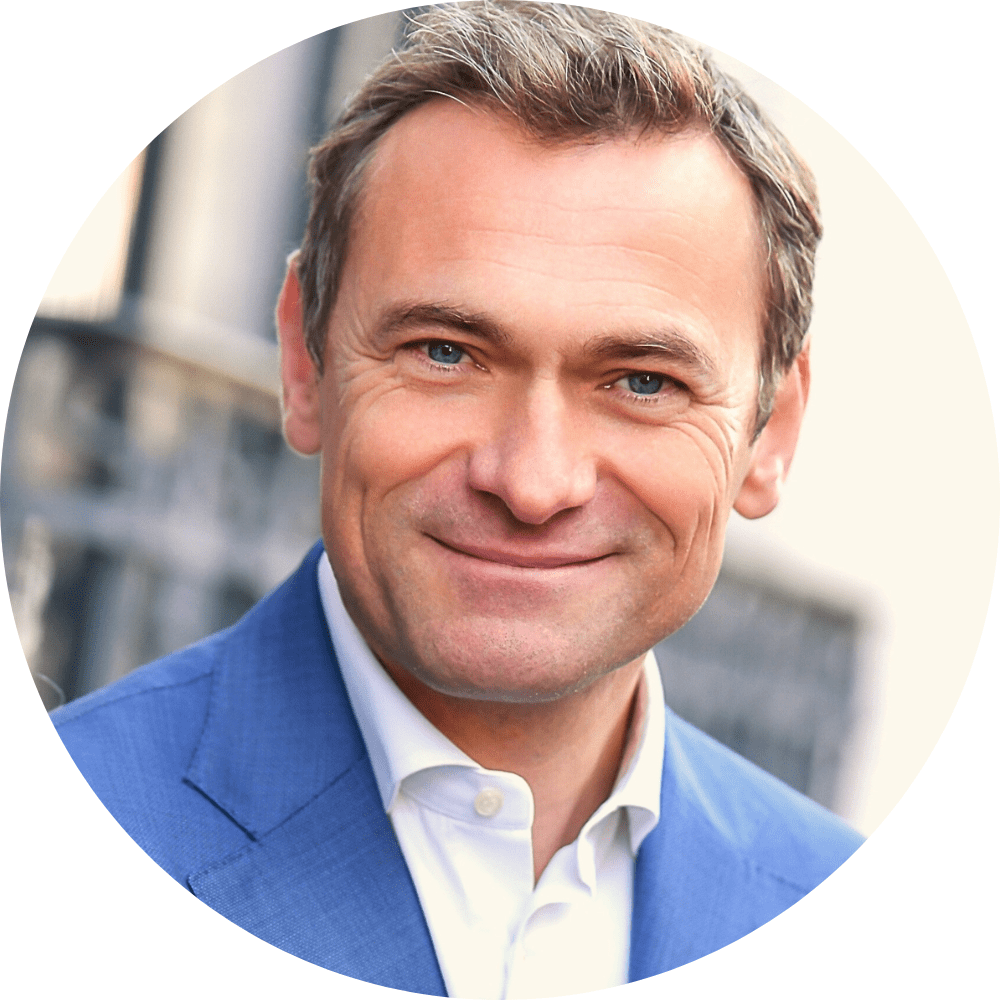
About Benoît
Benoît Legrand is a visionary business leader with over 25 years of experience in various C-level positions across multiple countries. Throughout his career, Benoît’s driving conviction has been centered around putting people at the heart of the company. He believes in genuine care for employees and customers to achieve lasting success. Having served as CEO of ING Direct France, Country CEO of ING France, and Chairman of ING France, he demonstrated his dedication to innovation by spearheading ING Ventures, the EUR 300m Corporate Venture Capital arm. After leaving ING in 2021, Benoît now advises organizations on innovation and transformation. He holds degrees in International Relations and Economics. Belgian and based in France for over 10 years, he has lived in 8 different countries and speak 5 languages.
Want to know more about trauma and its impacts?
Watch the first virtual convening in our webinar series hosted by The Wellbeing Project and the Collective Change Lab. You can also visit our new hub for research and stories on intergenerational trauma. Together, we explore how we can move from trauma-informed to healing-centered ways of working for systemic change.

